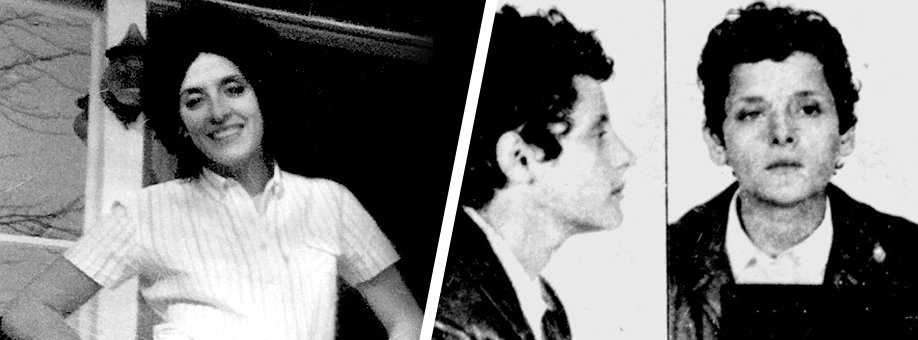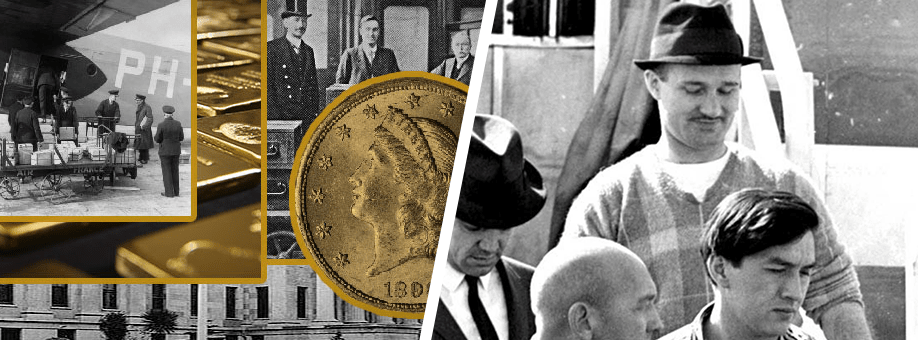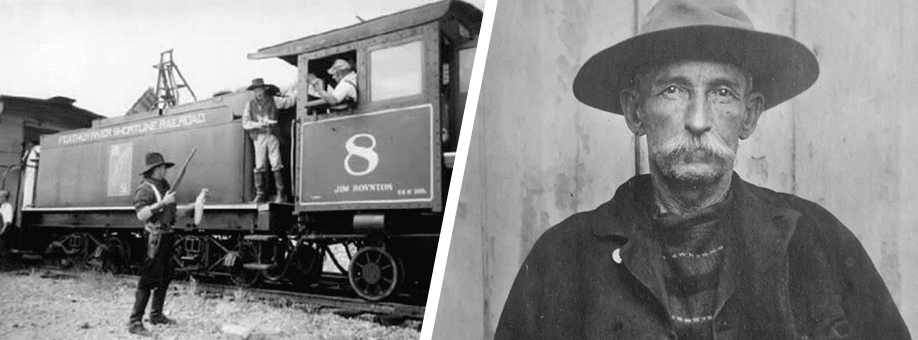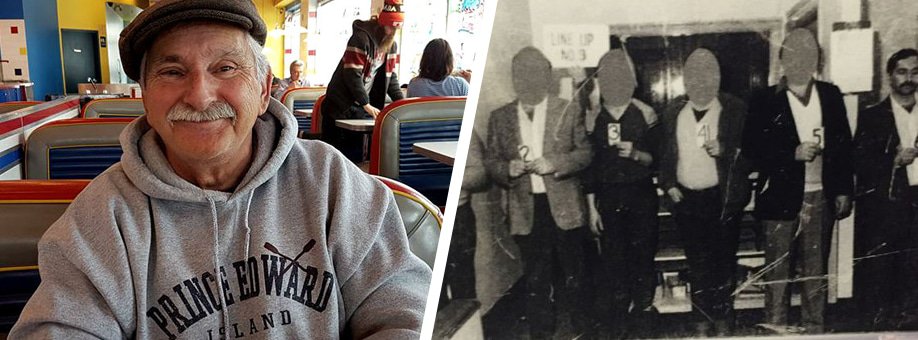- 5
Caisse Populaire Heist

Machine Gun Molly
Machine Gun Molly was the moniker given to Monica Proietti, an infamous bank robber who resided in Montreal, Canada. The name was because Proietti was known to carry a semi-automatic machine gun, a gift from one of her criminal lovers. However, despite the name, Machine Gun Molly did not harm or shoot her gun during any robbery. She was known to enter, grab, and leave without harming anyone. Born in 1939, Proietti was forced into a life of crime due to poverty. Her family was large and poor, so the only way to make ends meet was to steal. However, she first began as a prostitute, with her sole motivation being to make enough money to help her mother raise her siblings. It is while she was prostituting that she got introduced to the world of stealing by her grandmother.
But instead of stealing from small businesses, Monica Proietti decided to get into the male-dominated field of robbing banks. She was perfect at the job and managed to steal around $100,000 throughout her Canadian bank heist career. At the age of 17, Proietti married a Scottish gangster named Anthony Smith, with whom they had three children. The motherhood life made her break from the criminal world until 1962 when Proietti and Smith were arrested after robbing Café Paloma. The arrest led to the deportation of Smith, leaving Proietti to tend for her family. After some time, Pioretti married Viateur Tessier, an infamous bank robber who refined the bank-robbing techniques of Monica Proietti. Together, Proietti and Tessier robbed a couple of banks, with Monica masterminding most of the robberies. However, the duo did not last because Tessier was later caught and sentenced to 15 years in prison.
Once again, Proietti was left to fend for herself and her children. Monica Proietti became an infamous bank robber who frequented the news outlets with her refined bank robbing skills. That is when she earned the nickname Machine Gun Molly. She managed to fool the authorities for two years by disguising herself in masculine attires during robberies. After a while, Proietti grew tired of robbing banks, and so she planned one last heist. She was going to use the money to begin a new life in Florida. Proietti took her time to plan for one of the most famous bank heists in Canada. Her target was Caisse Populaire and her accomplices were the Lelièvre brothers. They managed to rob a total of $3000 successfully. However, things went sour when the police identified their stolen vehicle. A car chase ensued, which later saw Proietti and her accomplices crash into a bus. The brothers surrendered, but Proietti started shooting at the police. She was later shot in the chest and died on the scene. - 4
The Great Gold Heist in Canada

Ken Leishman
Ken Leishman was one of the most notable criminals in Canada who masterminded many bank robberies earning the nickname the flying bandit. But apart from being a robber, Leishman was a father, a husband, and a son. Most of all, he was a hardworking Canadian citizen who used to fly airplanes, not to mention do other odd jobs for a living. However, since Ken Leishman wanted to earn more than he was making, he decided to start robbing instead of trying his luck at legal Canadian casinos at the time. Leishman made a series of robberies that saw him spend most of his time in and out of prison. In jail, he used to help inmates write poems and romantic letters to their wives, and while out of prison, he would spend most of his time working while searching for his next target. While at Winnipeg airport, Leishman made a discovery that saw him execute the great gold heist.
A gold shipment would arrive at Winnipeg airport from Red Lake, a gold mining section in Northwestern Ontario. It would then be loaded on a plane and flown to Ottawa. With this discovery, Leishman decided to recruit a team of criminals who would help him carry out the heist. Disguised as a salesman, the first person he recruited was stationed at the Red Lake to observe when the next shipment would leave for Winnipeg airport. The other two members were stationed at Winnipeg airport. They wore overalls displaying fake Air Canada logo to appear as though they work at the airport. The last piece of the puzzle was stealing waybills from one of the Air Canada airports. The next step was to wait for confirmation from the fake salesman that the gold was on its way to Winnipeg airport. Once they got word, the two individuals at the airport stole a vehicle and went straight to the just-landed plane from Red Lake.
They then presented bogus paperwork that instructed the gold to be loaded in the stolen airport vehicle, stating that the gold would be rerouted to Ottawa. Leishman and his men took off the runway instead of loading the gold in a plane to Ottawa. They had stolen 360kgs of gold, making it one of Canada's largest and most famous gold heists. However, before they could even cash out the gold, Leishman and his crew were caught. According to the police, who were in charge of the investigation, Leishman had a great plan. However, his team made lots of blunders that resulted in their capture. The flying bandit was sentenced to prison where he spent most of his time writing love poems to his wife. - 3
Great Train Robbery

Bill Miner
Ezra Ellen Bill Miner was a Canadian outlaw who was born in 1847. He was the first individual to rob the famous Canadian Pacific Railway, popularly known as CPR. Miner was a smooth criminal who did not rob violently. That is how he earned the nickname The Gentleman Bandit. He is also credited for coming up with the phrase 'Hands Up!' which is currently common among law enforcement officers and bandits. Miner started by robbing stagecoaches, a crime that landed him in prison for 25 years. He served his sentence and was released in 1902. After his release, Bill Miner continued with his old habits. However, this time there were no stagecoaches, and so he started robbing trains. Miner and his accomplice had a unique way of robbing trains. They would get on a train as it stopped or slowed down. As soon as it continued with the journey, they would take charge of the engine, unhook the express car and ask the engineer to continue the train.
The next step was to plunder whatever was in the express car, be it currency or gold. In 1903, while trying to rob a train, Miner and his accomplice were ambushed. One was killed and another wounded. Miner escaped without stealing anything. The incident forced Bill Miner to cross over to Canada, posing as George Edwards. He settled in Kamloops, where he continued his robbing spree with his new gang which comprised of American gunman Thomas 'Shorty' Dunn. In 1904, Miner and his crew successfully robbed the first CPR train. It was Transcontinental Express No. 1. They managed to walk away with $50,000 in US bonds, gold dust worth $6000, and currency worth $900. Due to the magnitude of the robbery, the provincial government, the CPR, as well as the federal government offered a reward of $11,500 to anyone who would help capture the bank robbers. However, no one was ever caught, and Miner continued to live peacefully as George Edwards.
After some time, Miner and his crew planned to execute another train heist in Canada. Similar to the initial theft, they wanted to plunder a CPR Transcontinental Express. However, this time, train number 97 was the target. They managed to rob the train 24km east of Kamloops and stole liver pills and $15. The authorities were convinced that the robbers were behind the 1904 train robbery, so a manhunt ensued. The reward to capture the bandits was increased to $15000, and that saw Royal North West Mountain police and provincial police take part in the manhunt. The search also involved cowboys, bloodhounds, and trackers. The CPR even provided a train which not only transported searchers but also provided them with supplies. Miner and his men avoided capture until May 14, when they apprehended Miner and the other crooks in a camp. The Americans identified George Edwards as Bill Miner and he was sentenced to life imprisonment. His popularity made Canadians come up with a Bill Miner anecdote. - 2
Canadian Maple Syrup Heist

The Greatest Heist of the Century
The Maple Syrup Heist is one of the biggest robberies in Canada, popularly known as the greatest heist of the century. Unlike most robberies, the heist was tactical, and it took 17 men to carry out the theft that span of several months. From 2011 to 2012, the group ingeniously planned and syphoned approximately 30,000 maple syrup from one of Quebec's largest Maple syrup storage facilities. The value of the syrup was C$18.7 million, which is more than the amount of many progressive jackpots found in some of the leading Canadian Casinos. The facility was operated and owned by the Federation of Quebec Maple Syrup Producers. Federation of Quebec Maple Syrup Producers is a cartel-like organization known to control about 77% of the maple syrup worldwide. That is why they had a reserve with more than enough syrup costing C$18.7 million and more.
Not much is said about the heist's planning; however, considering that the theft was executed for several months without anyone noticing, everything was carefully thought through. The perpetrators would syphon maple syrup from the barrels and transport it to a different location. The empty barrels would then be filled with water to have the same weight as the syrup. However, there are instances where the barrels remained utterly empty. After all, the operation was getting larger and massive, thus hard to control. For the number of months the heist took place, 9,571 barrels were emptied. The stolen syrup was offloaded in a sugar shack in one of the remote areas in Quebec. From there, it was transported to regions such as New Brunswick and Vermont. The thieves would then repackage the syrup in small batches then ship it to different regions in the country. This step was meant to reduce suspicion. Upon transportation, the syrup would be sold to legitimate syrup distributors.
The operation continued perfectly until the fall of 2012. Michel Gauvreau, an inspector for the Federation of Quebec Maple Syrup Producers, climbed a barrel and nearly fell since it was empty during the annual inventory. Investigations began, and it led to a Kedgwick-based exporter. In his possession were numerous maple syrup barrels completely full of the stolen syrup. By December 20, 2012, the authorities had captured 17 men in connection with the theft. Among the perpetrators was Richard Vallières, who was accused as the ringleader of the group. He was sentenced to 8 years in prison with a fine of C$9.4 million. In the event the fine was not paid, Richard Vallières would serve a maximum of 14 years in prison. The other perpetrator was Raymond Vallières. Raymond was the father of Richard Vallières. He was sentenced to two years in jail. Other caught individuals include Étienne St-Pierre, Avik Caron, and Sébastien Jutras, who used to transport the syrup. - 1
Merrill Lynch Inc Canada Heist

Melvin Mingo
Melvin Mingo is the name you hear whenever the Merrill Lynch heist is talked about. That is because he is the individual who planned and executed the robbery with friends, some of whom were members of the Russian Mob. The idea of robbing Merrill Lynch came to Melvin Mingo while he was sitting in a bar frequented by a gang called West End. At one end of the bar, a Merrill Lynch corporation's employee was telling a woman about the amount of money that passed through his hands-on a daily basis. The sums of money in the form of securities caught the attention of Melvin Mingo.
Immediately, Mingo started canvassing Merrill Lynch with the intent of staging one of the biggest bank heists in Canadian history. Melvin did his canvassing work for several months. He used to disguise himself as an office worker and a courier. He mostly canvassed the area in the morning for approximately 30 minutes. He discovered that the office building housed eight elevators. However, only one reached the basement. Another crucial observation was that the couriers at Merrill Hill did not carry guns while escorting the securities. Melvin then found an insider whom he told the plan to rob the bank. According to the inside man, the two guards were particularly lazy.
Another guard who interested Melvin Mingo was the one outside the bank. He was easily distracted by women, and so Melvin understood precisely what to do with him. In December 1984, Mingo had a plan and a crew to execute the job flawlessly. They went into the building, took the guards hostage in the elevator, tied them up, and left with the securities. The job was nicely done as no one got hurt. Mingo kept the securities for a short period before he decided to dispose of them to a banker willing to purchase the securities at a loss. During the second meeting with the banker, Mingo was arrested and sentenced to nine years in prison. The securities were worth $1.2 million; money you cannot make at once, not unless you are playing some of the best casino games in Canada.
The above heists are some of the biggest robberies in Canadian history, or at least the most famous. However, these days security has been tightened, making it hard for someone to walk into a bank and come out a millionaire - unless they're withdrawing money won from a progressive jackpot at the top Canadian online casinos.
